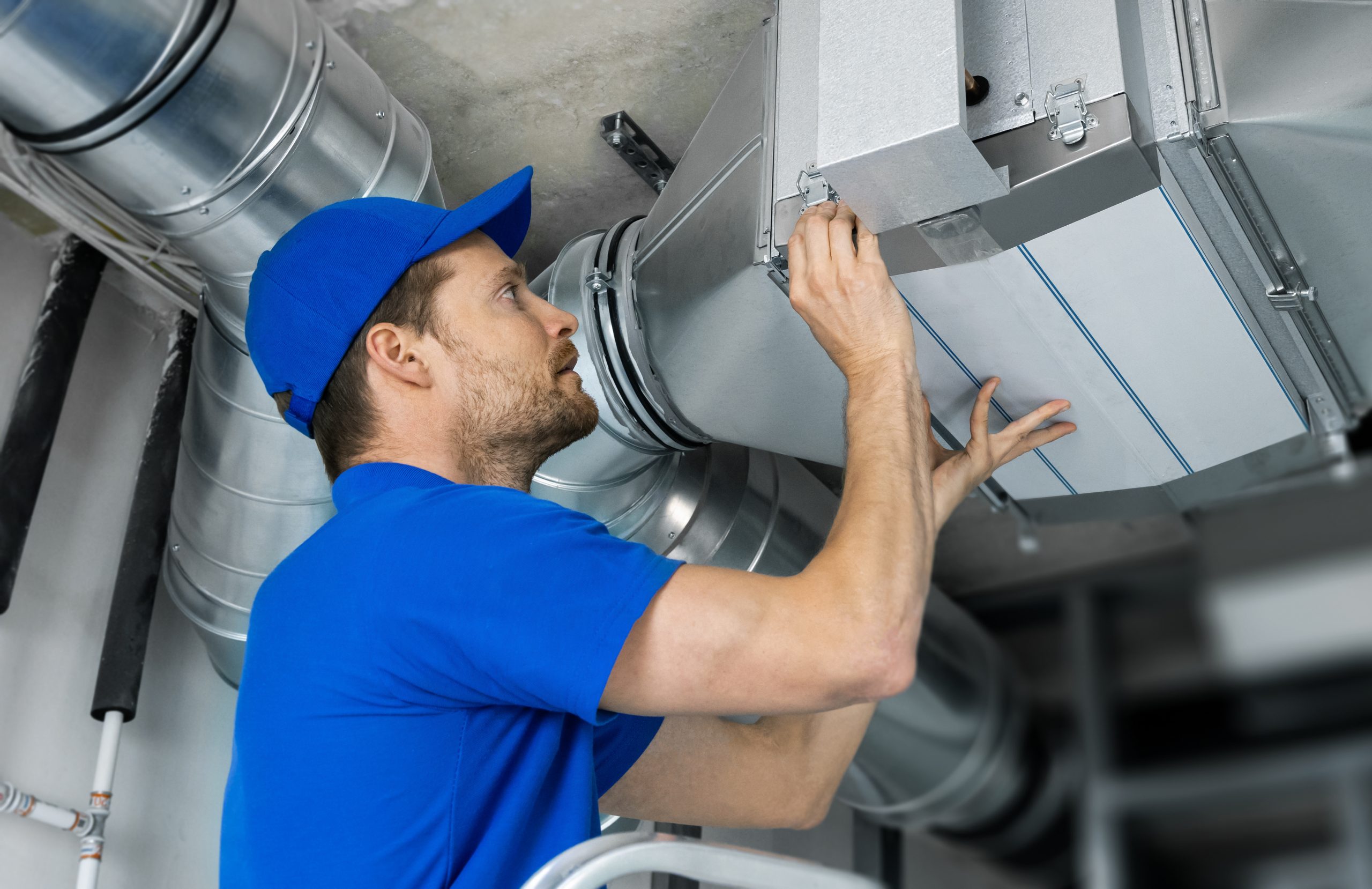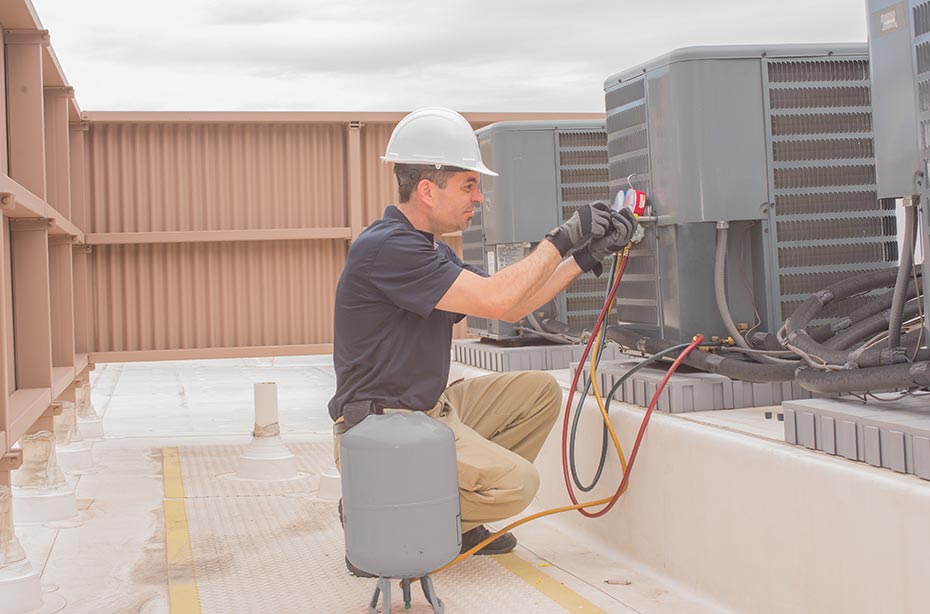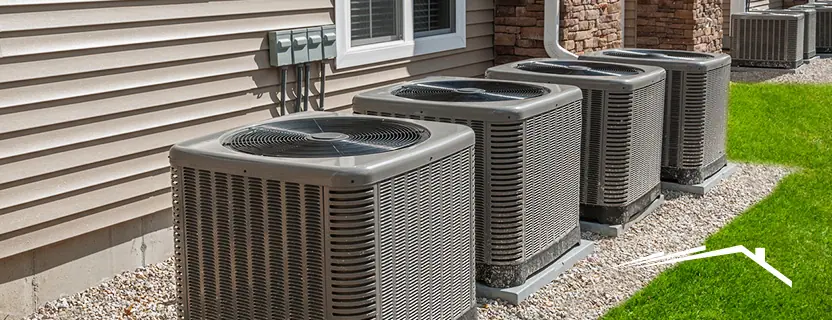Your Ultimate Checklist for Effective heat pump service
Your Ultimate Checklist for Effective heat pump service
Blog Article
How a Heatpump and Heater Collaborate to Enhance Your Home's Home heating Effectiveness
Recognizing just how a heatpump and furnace work with each other is important for house owners seeking efficient heating options. Each system has its staminas, offering a well balanced method to home comfort. The heatpump succeeds in moderate temperature levels, while the furnace delivers quick heat throughout severe cold. This harmony not only reduces energy costs yet additionally boosts the lifespan of both devices. What aspects affect this partnership, and how can property owners maximize their benefits?
Recognizing Warm Pumps: Just How They Function
Although several people might be strange with their internal workings, heatpump play a necessary role in modern-day furnace. These devices run by moving warmth from one location to one more, utilizing the concepts of thermodynamics. In chillier months, a heat pump extracts heat from the outdoors air, ground, or water, and transfers it inside to warm the home. On the other hand, throughout warmer months, it can turn around the procedure, acting as an ac unit by eliminating warm from inside to the outside.Heat pumps consist of an evaporator, growth, compressor, and condenser shutoff. The refrigerant within the system takes in warm as it vaporizes at low temperatures and stress. The compressor then enhances the stress and temperature of the refrigerant, enabling it to launch heat as it condenses. This efficient process can significantly reduce energy intake contrasted to typical home heating approaches, making heatpump a sustainable choice for environment control in homes.
The Role of Furnaces in Home Home Heating
Heating systems play a crucial role in home heating by offering a trustworthy resource of heat throughout the cooler months. They operate by generating heat through combustion or electric resistance, distributing it throughout the home by means of ducts or radiant systems. The effectiveness of a heating system is often gauged by its Annual Gas Utilization Efficiency (AFUE) ranking, which shows exactly how properly the unit converts fuel into heat.Furnaces can make use of different power resources, consisting of natural gas, electrical energy, lp, or oil, enabling property owners to select one of the most ideal option for their needs. Unlike warmth pumps, which might battle in extreme chilly, furnaces keep constant performance, making certain that indoor temperature levels remain comfortable regardless of outside problems. In addition, contemporary heating systems frequently come furnished with sophisticated modern technology, such as wise thermostats and variable-speed blowers, improving their effectiveness and responsiveness. This adaptability makes furnaces a crucial element in comprehensive home heating strategies.

Advantages of Utilizing Both Equipments With Each Other
Incorporating the strengths of both heating systems and warm pumps can bring about a much more efficient and efficient home heating service. Utilizing both systems enables property owners to capitalize on the heatpump's energy effectiveness during milder temperatures while relying on the furnace for more severe cold problems. This twin method can substantially decrease power prices, as warm pumps take in less electrical power than traditional heating techniques when temperatures are moderate.Additionally, utilizing both systems with each other can enhance comfort levels in the home. Heat pumps can offer regular, even heating, while heaters can swiftly increase ambient temperatures when needed. Moreover, the integration of both systems can expand the lifespan of equipment by minimizing deterioration on each unit, as they share the workload. Eventually, property owners can take pleasure in a balanced, cost-effective heating service that adjusts perfectly to varying climate conditions, guaranteeing a cozy and welcoming home throughout the winter season months.
How Warm Pumps and Furnaces Complement Each Other
When home owners integrate heatpump and heaters, they produce a corresponding furnace that takes full advantage of efficiency and comfort. Heatpump operate by transferring heat from the outdoors air or ground, making them highly effective in moderate climates. They excel throughout milder temperature levels, offering economical home heating. Conversely, heating systems generate warm through combustion or electrical resistance, delivering solid, prompt warmth during severe chilly conditions.The combination of these two systems enables vibrant changes based upon temperature fluctuations. During warmer months or milder winter season days, the heatpump can take the lead, preserving energy and minimizing expenses. As temperatures decline, the furnace can perfectly engage, guaranteeing regular heat throughout the home. This synergy not only optimizes energy use yet likewise improves the lifespan of both systems, as each unit runs within its optimal efficiency range. With each other, they develop a balanced setting that adjusts to differing climate demands.
Optimizing Performance: Tips for Homeowners
House owners can improve their heating performance via numerous useful techniques. Developing a normal upkeep schedule, incorporating clever thermostat modern technology, and implementing reliable insulation and sealing solutions are vital steps. These measures not only enhance comfort yet additionally decrease power costs.
Routine Maintenance Set Up
To assure maximum heating performance, developing a routine upkeep routine is crucial for any home. Home owners need to focus on routine assessments of both heatpump and heating systems to establish peak performance. This includes changing air filters every one to three months, as blocked filters can substantially decrease performance. Furthermore, scheduling specialist maintenance at the very least yearly allows professionals to determine and attend to potential concerns prior to they rise. House owners need to additionally clean up the heatpump's outdoor unit to prevent debris build-up that can impede airflow. By sticking to a regular maintenance timetable, home owners not only enhance their furnace' efficiency however also extend their lifespan, bring about higher convenience and lowered energy prices throughout the cooler months.
Smart Thermostat Combination
Integrating a clever thermostat right into a home furnace can significantly improve power efficiency, especially as it permits exact control over temperature level setups. These devices can find out the home owner's timetable and preferences, instantly changing the temperature level to enhance convenience while decreasing power usage. As an example, they can reduce home heating during times when the home is unoccupied, minimizing Read Full Report unnecessary intake. Lots of wise thermostats additionally offer real-time energy usage data, allowing homeowners to make enlightened choices about their heating routines. Furthermore, remote access using mobile phone apps permits individuals to change setups from anywhere, ensuring the home is cozy upon return. Overall, smart thermostat combination not only enhances comfort yet significantly adds to power cost savings and efficiency.
Insulation and Sealing Solutions
Smart thermostats play an important role in energy effectiveness, however their efficiency can be substantially improved by appropriate insulation and securing solutions. House owners need to prioritize shielding wall surfaces, floors, and attics to decrease warmth loss. High-grade insulation products, such as spray foam or fiberglass, can substantially boost thermal resistance. Additionally, sealing spaces around home windows, doors, and ducts protects against cool air seepage and warm escape. Weatherstripping and caulking are reliable approaches for attending to these leakages - heat pump installation ooltewah tn. Normal assessments for air leaks, along with making use of blower door tests, can help recognize issue locations. By buying insulation and sealing, house owners can enhance the efficiency of their home heating systems, ultimately leading to minimized power usage and lower energy expenses
Common Misconceptions Regarding Warmth Pumps and Furnaces
What mistaken beliefs border heatpump and heaters? Many people erroneously believe that heatpump are ineffective in chillier climates. In truth, contemporary heatpump are made to run successfully even in reduced temperatures, providing reliable home heating throughout wintertime. An additional typical myth is that furnaces are always more effective than heatpump. This depends on the details power sources and efficiency rankings of the devices in question. Some may likewise assume that using both systems all at once is unnecessary, however actually, this mix find here can optimize home heating effectiveness, specifically during severe climate condition. Furthermore, individuals often presume that heatpump require constant upkeep, when in truth, they have comparable maintenance needs to conventional home heating systems. By exposing these myths, home owners can make even more educated decisions regarding their home heating choices, ultimately causing improved convenience and energy effectiveness in their homes.
Upkeep Factors To Consider for Combined Equipments

Frequently Asked Concerns
Can Warm Pumps Work Properly in Extremely Cold Climates?
Warm pumps can struggle in very chilly climates due to minimized effectiveness and heat extraction limitations. Developments in technology have led to versions made for better efficiency in such conditions, enhancing their practicality in harsh atmospheres.
For How Long Do Warmth Pumps and Furnaces Normally Last?
Heatpump generally last 15 to 20 years, while furnaces have a life-span of 15 to three decades. Routine maintenance can extend their long life, making certain efficient operation and decreasing the need for early replacements.

What Is the Typical Price of Installing Both Systems?
The ordinary price of setting up both a heat pump and a heater usually ranges between $5,000 to $10,000 - ductless mini splits. Variables influencing this cost consist of system size, installation complexity, and regional labor rates
Exist Tax Obligation Incentives for Making Use Of Energy-Efficient Home Heating Systems?
Several home owners inquire about tax obligation incentives for next page energy-efficient furnace. Different government and state programs commonly offer credits or rebates, motivating the fostering of lasting technologies to lower energy usage and advertise environmental obligation.
Exactly how Do I Pick the Right Dimension Warm Pump and Heater?
Choosing the ideal dimension heatpump and heating system includes determining the home's square video footage, thinking about insulation quality, and examining local climate. Consulting an expert can guarantee perfect system performance and energy performance based upon details requirements. heat pump service. Recognizing exactly how a warmth pump and heating system job with each other is vital for home owners looking for efficient heating services. In colder months, a warmth pump removes warm from the outside air, ground, or water, and transfers it indoors to warm up the living space. When property owners incorporate heat pumps and heating systems, they create a corresponding heating system that takes full advantage of effectiveness and convenience. Warmth pumps operate by transferring warm from the outdoors air or ground, making them extremely effective in modest environments. Heat pumps can battle in very cool climates due to minimized effectiveness and warmth extraction restrictions
Report this page